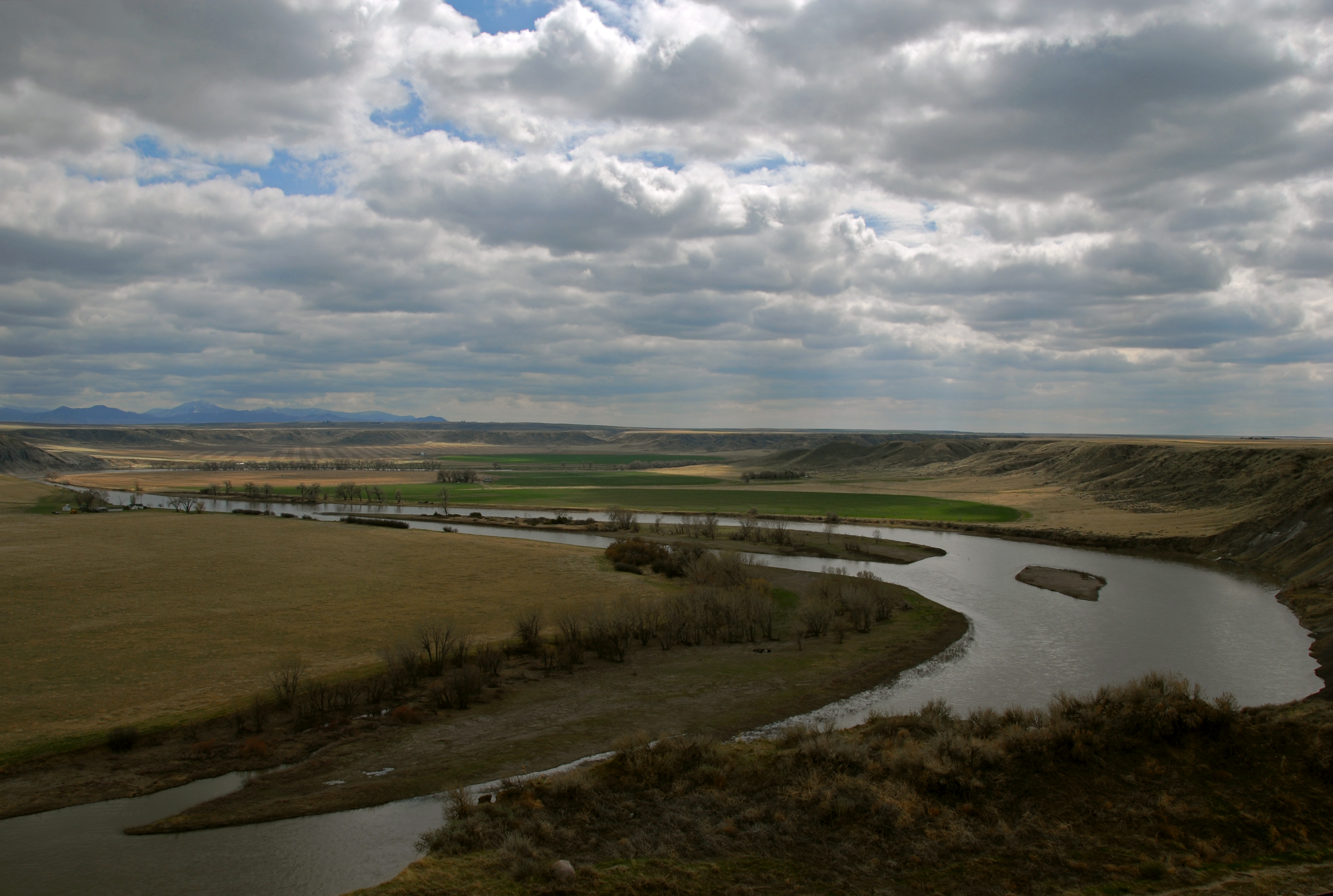Fort Benton: Montana's Birthplace (1 of 2)

Over the next century, Fort Benton would become the springboard for trade as goods would be offloaded at the navigable end of the Missouri River and transported west by wagon. Flood control and other initiatives in the 1940's rendered Sioux City the new head of navigation on the Missouri, as the Great Northern railroad would become the primary means of transportation to Fort Benton. Today, the tracks end just to the south, but the sense of history and importance to the area is ever-present. My favorite spot in Montana. – Chris Groeling
Spotters once sighted steamboats chugging up river eight miles away from Signal Point that rises from a sandstone bluff north of town. Word then went out to the townsfolk that a steamboat was “round the bend!” Today from the Signal Point and other places on this high perch, one can get a great view of the big Missouri, historic Fort Benton, the Bear’s Paw Mountains to the northeast and the Highwoods to the southeast.
The Corp of Discovery led by Captains Lewis and Clark past by the area on July 13, 1805 after having camped downstream about eight miles.
In 1845, Alexander Culbertson of the American Fur Company established Fort Lewis, a trading post just upstream from today’s Fort Benton. Ice jams and floods made reaching it in winter and spring difficult, so the post’s structures were dismantled and floated to the present day site in the spring of 1847. The first residents, though, arrived at the new location in autumn 1846, giving birth to Montana. This, the oldest continuing settlement in the state, was at the head of navigation on the lifeline to Montana Territory, the Missouri River.
The new edifice was named Fort Clay, but on Christmas day 1850, the name was changed to Fort Benton in honor of Senator Thomas Hart Benton, a patron of the American Fur Company. It soon became a boisterous “old west” town of legend. As Winfield Stocking wrote, “Although it continued to be a mere village in size, in a commercial way it was the Chicago of the plains. It was the door through which all the gold hunters, adventurers, speculators, traders, land-seekers, big game hunters, fugitives from justice, desperadoes and all the bad Indians on the top of the earth entered the Northwest.” A sign on the levee states that the street along the river was “the bloodiest block in the west.”
The Missouri River Steamboat Era, lasting from 1859 until 1888 gave this riverbank community new life at a time when the fur trading was dwindling. The first boat to dock was The Chippewa from St. Louis, on July 2, 1860. One tried in 1859 but didn’t make it. Throughout this colorful period, an average of 20 boats a year steamed up the Missouri towards Fort Benton. An estimated 600 of them arrived between 1860 and 1888.
Gold discoveries in western Montana created a rush that attracted would-be miners to the territory. Missouri steamboats were the most practical way to get here; an estimated 10,000 people made the journey along with countless tons of freight. The trip to Fort Benton from St. Louis took 60 days and cost about $150.
From the time the ice melted in the spring until the river froze in the fall, the one and one-half-mile-long levee was piled with goods headed for the gold camps of southwest Montana. “All trails lead out of Fort Benton” was a familiar statement in those days. The settlement was the anchor of the 625-mile-long Mullan Road, completed in 1860, that led to Walla Walla, Washington. Stage lines, bull trains and mule trains were used by travelers heading out of town.
Rick Graetz
